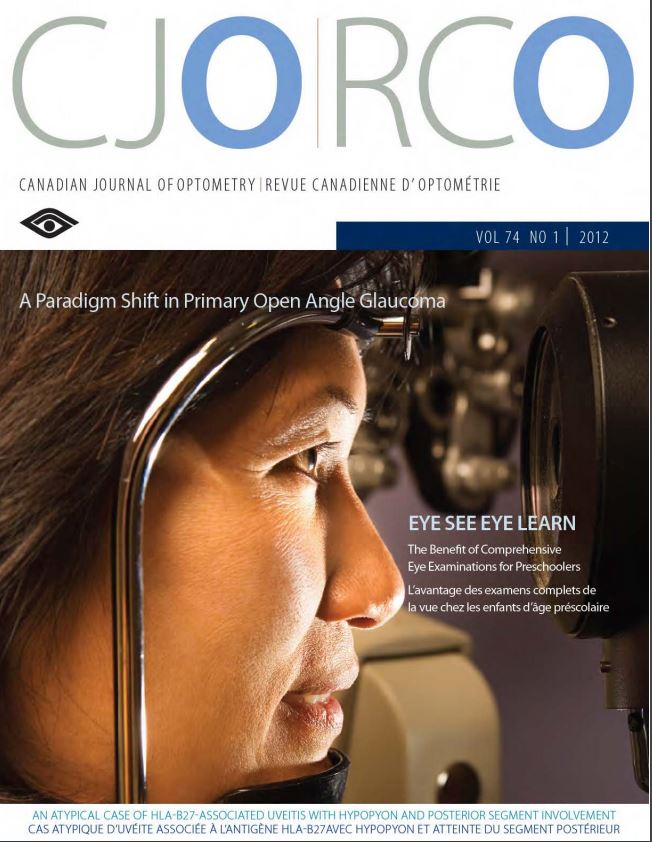An atypical case of HLA-B27-associated uveitis with hypopyon and posterior segment involvement
DOI:
https://doi.org/10.15353/cjo.74.576Keywords:
anterior uveitis, intermediate uveitis, HLA-B27, hypopyonAbstract
The presence of a hypopyon and posterior segment involvement are uncommon clinical findings in HLA-B27-associated uveitis. Furthermore, first-time attacks rarely occur in the elderly. This report highlights an atypical uveitis case involving an older patient, an evident hypopyon and severe intermediate uveitis in one eye.
The 60-year-old Caucasian male was admitted for a painful, red eye with a sudden decreased vision to hand motion, in the affected eye. Ocular and systemic history were unremarkable. An anterior chamber examination of the eye revealed extensive cells and flare with a conspicuous hypopyon. An evaluation of the posterior segment revealed significant vitreous haze, obstructing all view to the retina. Despite the age and the atypical ocular findings of the patient, a diagnosis of HLA-B27-associated uveitis was made following an extensive clinical and laboratory evaluation. The inflammatory condition was successfully managed with a combination of intravenous, topical and oral corticosteroids tapered over the course of a few weeks, and visual acuity recovered to 20/30.
This case is an important reminder that atypical signs, such as a hypopyon or intermediate uveitis, can occur and may be a significant sign of HLA-B27-associated uveitis. Clinicians should be aware of the diverse manifestations of HLA-B27-associated uveitis and be careful to include a comprehensive assessment of both the anterior and posterior segments of any presenting painful, red eye.
Published
How to Cite
Issue
Section
License
Copyright (c) 2012 Thomas Xie, Etty Bitton

This work is licensed under a Creative Commons Attribution-NonCommercial-NoDerivatives 4.0 International License.


